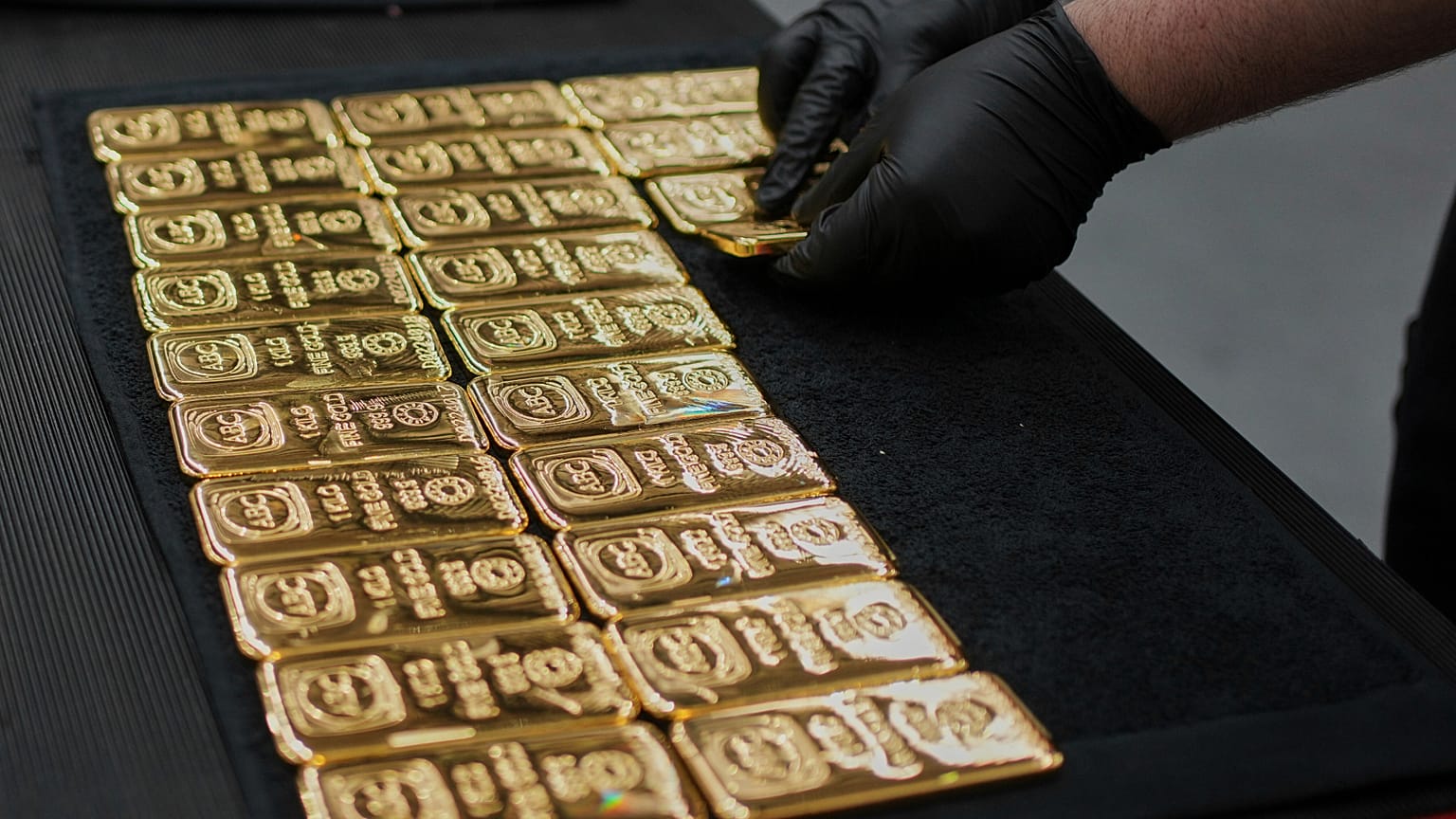Gold surges to record high as central banks turn from dollar to bullion
Gold surges to record high as central banks turn from dollar to bullion
By Una Hajdari
Published on

A historic price for the world’s oldest safe-haven asset signals waning confidence in the dollar and mounting pressure on the Fed.
Gold jumped to a record $3,508.50 (€3,015.08) an ounce on Tuesday, fuelled by expectations of a US Federal Reserve rate cut and mounting uncertainty for investors.
The precious metal is seen as a haven for investors, with demand for it surging when trust in the stability of paper currencies or financial markets dips.
Earlier this year, gold prices surged when US President Donald Trump announced a raft of controversial tariffs against other countries.
Gold's record-high value underscores deep unease over the global outlook and questions about the Fed’s independence as US President Donald Trump ramps up pressure on policymakers.
Dollar is no longer the 'gold standard'
The rise in gold prices has come as part of a multiyear rally for precious metals.
Central banks from Asia to the Middle East have been accelerating their purchases for the fourth year in a row, adding a powerful tailwind to prices, with predictions being that at least 1,000 metric tonnes of gold will be purchased by governments for their gold reserves.
The move reveals a decreasing reliance on the US dollar at a time when Washington’s fiscal trajectory and political battles are clouding its standing as the world’s reserve currency.
A survey of 73 central banks conducted by the World Gold Council revealed that 95% of them are expected to increase their gold holdings over the next 12 months, while nearly three-quarters of them are anticipated to shrink their dollar reserves.
China, who is still locked in negotiations with the US over a more favourable trade deal, has been accumulating gold on a monthly basis, recording its ninth straight month of purchases in July.
De-dollarisation will hurt the world's most reliable currency
For much of modern history, most national currencies were tied directly to gold — namely, governments guaranteed that paper money could be exchanged for a fixed weight of gold they had stored in their reserves.
Everyday transactions were carried out with paper money because it was far simpler than calculating gold values or carrying bullion, while governments backed those notes with gold held securely in their vaults.
After World War II, dozens of Allied nations gathered in Bretton Woods in New Hampshire to host the United Nations Monetary and Financial Conference.
They decided to create the International Monetary Fund and the World Bank, and established a system where the US dollar was pegged to gold at $35 an ounce.
Read the full article at: Gold surges to record high as central banks turn from dollar to bullion | Euronews
